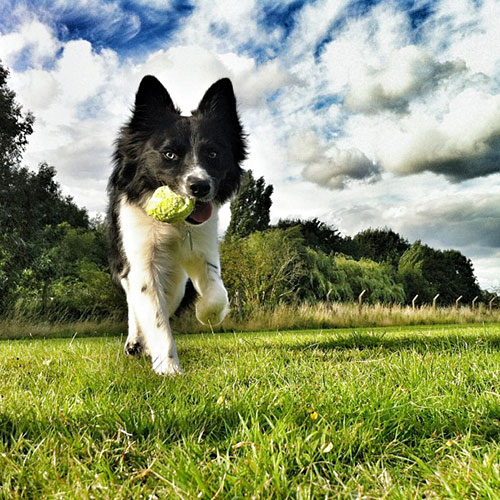Believe it or not, there is a science behind your dog’s body language and behavior. Body language is a form of communication for a dog, whether it be communicating with their owner or communicating with other dogs or animals. It is important for pet owners to be able to read their dog’s body language and understand their behavior and what they are trying to communicate. Your dog’s behavior is directly related to their emotional state. Let’s talk about some common dog behaviors and body languages and what they could mean.
Overly Excited or Hyperactive Behavior
How happy is your dog to see you when you get home? People often misinterpret their dog’s hyperactive behavior when they come home to simply meaning that they are happy to see them. Don’t worry, we aren’t saying that your dog isn’t happy to see you, but overly excited or hyperactive behavior is also a sign of a lack of exercise and pent up energy. So, what is your dog trying to tell you?
- “I’m not getting enough exercise and it’s causing me to feel out of control!”
- “Hey! I am way overdue on my daily exercise – let’s go for a long walk or jog!”

Destructive Behavior
If your normally house-trained and well-behaved dog starts to eliminate on the floor or chew on furniture, this could mean that your dog is not getting enough mental stimulation. In other words, they are bored. This may seem like a petty reason for a dog to behave this way, but think about it in these terms – it’s basically the same thing as a person with cabin fever. Dogs need interaction and mental stimulation just like we do. So, what is your dog trying to tell you?
- “Hey – don’t you have a toy that I can play with or a bone that I can chew on?”
- “Stop ignoring me! I could really use some quality time with you and I don’t know how else to get your attention.”
- “I’m bored. Can we go for a quick trip to the dog park?”
Lethargy or Sudden Loss of Interest in Physical Activity
If your dog is normally very active and alert and then suddenly starts to display signs of lethargy or a loss of interest in normal daily activities, this is a sign that something is wrong. Sudden changes of behavior of any kind are a good sign that you need to take your dog to the vet. You know your dog better than anyone, so it’s important to pay close attention to normal behaviors and recognize when something isn’t right. So, what is your dog trying to tell you?
- “I really want to go outside and play, but I just don’t feel very good. I don’t understand why I don’t have any energy.”
- “Something isn’t right. I think I need to go see my veterinarian so that he can find out what’s wrong and get me back to my old self again.”

Body Language 101
Here are some common signs to look for in determining your dog’s mood. What is your dog trying to tell you? Let’s find out.
“I’m feeling happy and playful!”
- Wiggly body
- Relaxed wagging tail
- Open, relaxed mouth
- Bouncy, exaggerated gestures
- Pawing at the air
- Ears up and relaxed
“I’m feeling anxious or stressed out.”
- Whining or whimpering
- Hiding behind people or objects
- Fast wagging, low tail
- Ears may be pinned back
“I’m feeling scared.”
- Tail tucked between legs
- Head down, cowering
- Tense and/or shivering
- Ears pinned back tightly
- May urinate submissively
“I’m feeling aggressive!”
- Hair standing up on back
- Lips curled back showing teeth
- Snarling or growling
- Intense eye contact on a particular subject
- Leaning forward or ‘attack stance’
These are all behaviors and body language signals that dog owners should be aware of and pay close attention to. After all, this is the only way that your dog can communicate with you! Learning your dog’s normal behaviors and body language signals can help you keep them safe and healthy for many years to come.

